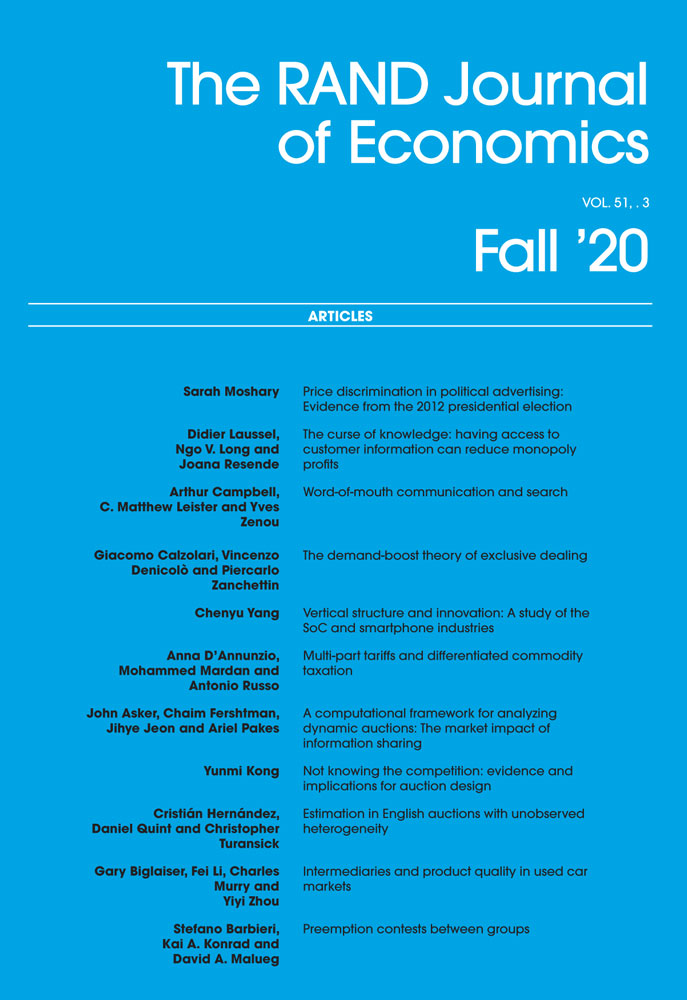Multi-part tariffs and differentiated commodity taxation
We thank David Agrawal, Jan Brueckner, Youssef Benzarti, Jacques Crémer, Sebastian Kessing, Marko Runkel, and Stephen Smith for comments on an early version of this article. We also thank audiences at ETH Zurich 2016, University of Exeter 2016, Toulouse School of Economics 2017, LAGV conference 2016, IIPF conference 2016, CESifo PSE conference 2017, OFS Workshop on Indirect Taxes 2017, CESifo Summer Institue 2019 (Taxation in the Digital Economy), and CSEF-IGIER Symposium on Economics and Institutions 2019. We are grateful to the Editor, David Myatt, and to three anonymous referees for insightful comments that substantially improved the article. Part of this research was carried out while Anna D'Annunzio was at CSEF (University Federico II, Naples). All errors are our own.
Abstract
We study commodity taxation in markets where firms, such as Internet Service Providers, energy suppliers, and payment card platforms, adopt multi-part tariffs. We show that ad valorem taxes can correct underprovision and hence increase welfare, provided the government applies differentiated tax rates to the usage and access parts of the tariff. We obtain this result in different settings, including vertically interlinked markets, markets where firms adopt menus of tariffs to screen consumers, and where they compete with multi-part tariffs. Our results suggest that exempting these markets from taxation may be inefficient.




